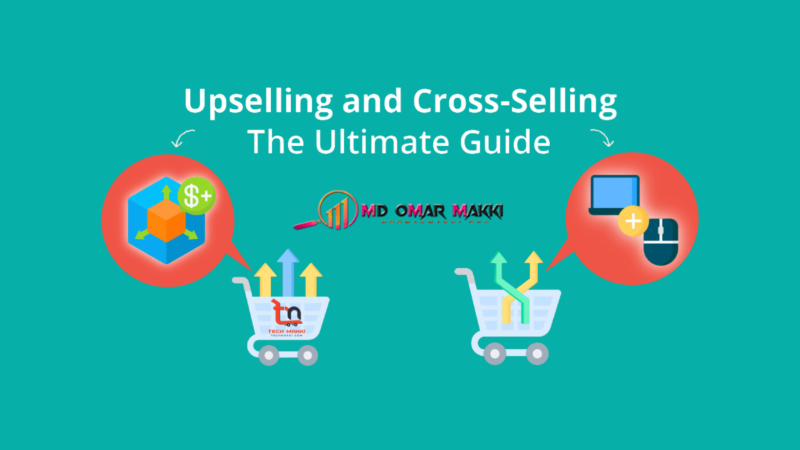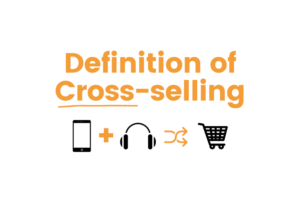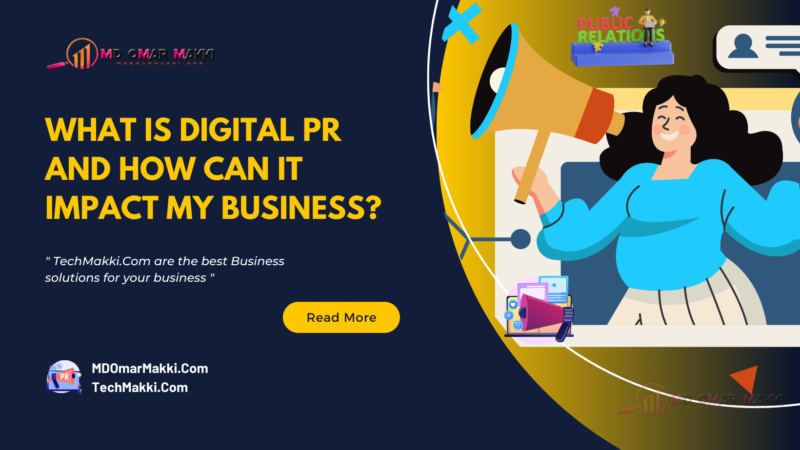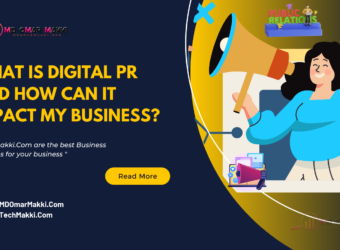<span style="color: #282828; font-family: Roboto, Arial, sans-serif;"><span style="font-size: 14px;">Hey, This is MD Omar Makki. A Digital Entrepreneur, Author, Blogger, Influencer, Content Creator, Web Developer & Designer, SEO Expert, Digital Marketing Specialis. Also CEO & Founder of Tech Makki, one of the most popular IT Agency of Bangladesh. </span></span>
Hi, I’m MD Omar Makki
a
Web Developer.
SEO Expert.
Digital Marketer.
Influencer.
Author.
A Digital Entrepreneur, Blogger, Marketing Consultant, SEO Specialist, Web Developer & Designer, Digital Marketing Expert. Also Founder & CEO of Tech Makki, one of the most popular IT Agency of Bangladesh.

What I Do
Business Strategy
We'll help you to grow your business and eliminate unnecessary costs. Our expert handle everything.
Web Development
I can make your business website a revenue-generating machine rather than creating just an online identity.
SEO Service
Help to rank your website on first page of Google Search 100% guaranteed by following (white hat SEO) Google guidelines.
Social Media Marketing
Help to create content, manage account, groups and social media advertising to increase your visibility and brand awareness.
Digital Marketing
Helps Google search and your prospective customers 24/7 to find your Products or Services online whenever they need.
Problem Solving
We, as a team, try to solve all your common digital marketing problems with the best proved solutions 24/7 support from us.
My Portfolio
My Resume
Work Experience
Digital Marketer & SEO
Freelance - (2010 - 2018)I'm working as a freelance on fiverr, upwork, peopleperhour, seoclerk and social media. And from their to create a Tech Makki IT agency.
Digital Marketer
Bagdoom - (2013 - 2015)The Bangladesh economy has grown strongly over recent years, having transformed itself from a producer and innovation-based economy.
Founder & CEO
Tech Makki - (2014 - Present)A popular destination with a growing number of highly qualified homegrown graduates, it's true that securing a role in Malaysia isn't easy.
Trainer Experience
Digital Marketing Instructor
Tech Makki (2013 - 2015)I'm starting a early online based instruction about Digital Marketing Service & SEO service related learning sector. That time have some limited learning ways.
SEO & Link Building Instructor
Charity Work (2015 - 2016)More than 400 people are watching daily and register to learn SEO & Link building techniques to make money by providing freelance services.
Web Developer and Instructor
Innovative Computer Training Center (2018 - 2019)Almost 1 year work as a WordPress developer and guide/train them as a instructor. After a year I'm just leave and start again my online live classes/courses.
Marketing Skill
Social Media Marketing (SMM)
Search Engine Optimization (SEO)
Search engine marketing (SEM)
Pay-per-Click (PPC)
eCommerce Marketing
Development Skill
HTML
CSS
WordPress
PHP
Speedup
Company Experience
Personal Portfolio April Fools
University of DVI (1997 - 2001))The education should be very interactual. Ut tincidunt est ac dolor aliquam sodales. Phasellus sed mauris hendrerit, laoreet sem in, lobortis mauris hendrerit ante.
Examples Of Personal Portfolio
University of DVI (1997 - 2001))The education should be very interactual. Ut tincidunt est ac dolor aliquam sodales. Phasellus sed mauris hendrerit, laoreet sem in, lobortis mauris hendrerit ante.
Tips For Personal Portfolio
University of DVI (1997 - 2001))The education should be very interactual. Ut tincidunt est ac dolor aliquam sodales. Phasellus sed mauris hendrerit, laoreet sem in, lobortis mauris hendrerit ante.
Job Experience
Personal Portfolio April Fools
University of DVI (1997 - 2001))The education should be very interactual. Ut tincidunt est ac dolor aliquam sodales. Phasellus sed mauris hendrerit, laoreet sem in, lobortis mauris hendrerit ante.
Examples Of Personal Portfolio
University of DVI (1997 - 2001))The education should be very interactual. Ut tincidunt est ac dolor aliquam sodales. Phasellus sed mauris hendrerit, laoreet sem in, lobortis mauris hendrerit ante.
Tips For Personal Portfolio
University of DVI (1997 - 2001))The education should be very interactual. Ut tincidunt est ac dolor aliquam sodales. Phasellus sed mauris hendrerit, laoreet sem in, lobortis mauris hendrerit ante.
I’m a Digital Entrepreneur, Content Creator, Web Developer & Designer, Digital Marketing Expert, SEO specialist And content writer or blogger. You May Call Him A-One-Man-Army!
A hands-on workaholic creative entrepreneur and digital marketer with more than 14 years’ fieldwork experience along with a growing list of satisfied customers on my side. He has been responsible for bringing concepts to life for clients as enjoys working on the internet and learning everything there is to know about digital platforms. In addition to his introduction, He believes detailed research is a must when it comes to any digital site. Furthermore, he remains connected to digital media in addition to learning more.
In 2013 Bangladeshi people know me as a Best Digital Marketing Expert in Bangladesh. And after few years when start my live class training about SEO then people called me Top SEO Expert in Bangladesh.
Testimonial

Nevine Acotanza
Chief Operating OfficeAndroid App Development
via Upwork - Mar 4, 2015 - Aug 30, 2021 testMaecenas finibus nec sem ut imperdiet. Ut tincidunt est ac dolor aliquam sodales. Phasellus sed mauris hendrerit, laoreet sem in, lobortis mauris hendrerit ante. Ut tincidunt est ac dolor aliquam sodales phasellus smauris test

Cara Delevingne
Chief Operating OfficerTravel Mobile App Design.
via Upwork - Mar 4, 2015 - Aug 30, 2021 testMaecenas finibus nec sem ut imperdiet. Ut tincidunt est ac dolor aliquam sodales. Phasellus sed mauris hendrerit, laoreet sem in, lobortis mauris hendrerit ante. Ut tincidunt est ac dolor aliquam sodales phasellus smauris test

Jone Duone Joe
Operating OfficerWeb App Development
Upwork - Mar 4, 2016 - Aug 30, 2021Maecenas finibus nec sem ut imperdiet. Ut tincidunt est ac dolor aliquam sodales. Phasellus sed mauris hendrerit, laoreet sem in, lobortis mauris hendrerit ante. Ut tincidunt est ac dolor aliquam sodales phasellus smauris
Awesome Clients
My Pricing
Make Your Single Page
Elementor / WPBakeryAll the Lorem Ipsum generators on the Internet tend to repeat predefined chunks as necessary
1 Page with Elementor
Design Customization
Responsive Design
Content Upload
Design Customization
2 Plugins/Extensions
Multipage Elementor
Design Figma
MAintaine Design
Content Upload
Design With XD
8 Plugins/Extensions
Design Make this Page
Elementor / WPBakeryAll the Lorem Ipsum generators on the Internet tend to repeat predefined chunks as necessary
5 Page with Elementor
Design Customization
Responsive Design
Content Upload
Design Customization
5 Plugins/Extensions
Multipage Elementor
Design Figma
MAintaine Design
Content Upload
Design With XD
50 Plugins/Extensions
Customize Your Single Page
Elementor / WPBakeryAll the Lorem Ipsum generators on the Internet tend to repeat predefined chunks as necessary
10 Page with Elementor
Design Customization
Responsive Design
Content Upload
Design Customization
20 Plugins/Extensions
Multipage Elementor
Design Figma
MAintaine Design
Content Upload
Design With XD
100 Plugins/Extensions
My Blog

6 Updated SEO Strategies for E-commerce Stores (2024)
6 Updated SEO Strategies for E-commerce Stores (2024)
In the competitive world of e-commerce, staying ahead of the curve is crucial for success. One of the most effective ways to ensure your online store thrives is through search engine optimization (SEO). With the ever-changing landscape of digital marketing, it’s essential to keep your SEO strategies up to date. In this article, we’ll explore six updated SEO strategies for e-commerce stores that can help you boost your online visibility, drive traffic, and increase sales.
Understanding the Evolution of E-commerce SEO
The Changing Landscape of E-commerce
E-commerce has evolved rapidly over the years. From simple online catalogs to complex, user-friendly platforms, the way we shop online has changed dramatically. With this evolution, SEO practices have also transformed. What worked a few years ago may no longer be effective today. To remain competitive, it’s essential to understand these changes and adapt your strategies accordingly.
Why SEO is Critical for E-commerce Success
SEO is not just about ranking higher on Google; it’s about attracting the right audience, offering a seamless user experience, and ultimately driving conversions. For e-commerce businesses, SEO can make or break success. With the right approach, you can improve your store’s visibility, increase organic traffic, and ensure a steady stream of customers to your site.
SEO Strategies 1 – Optimizing for Mobile Search
The Rise of Mobile Commerce
Mobile commerce, or m-commerce, is no longer a trend—it’s the future of online shopping. With more consumers shopping on their smartphones, optimizing your e-commerce store for mobile search has become more critical than ever. Google’s mobile-first indexing means that the mobile version of your site is now the primary basis for how your site is ranked.
Best Practices for Mobile SEO
Mobile-Friendly Website Design
Ensuring your website is mobile-friendly is the first step in optimizing for mobile search. This means using responsive design so that your site adapts to different screen sizes. Your customers should have the same positive experience whether they visit your site on a desktop, tablet, or smartphone.
Accelerated Mobile Pages (AMP)
AMP is a Google-backed project designed to make mobile pages load faster. By implementing AMP, you can improve your page loading speed, which is a critical ranking factor for mobile search. Faster loading pages not only rank higher but also reduce bounce rates, keeping users engaged with your content.
Strategy 2 – Enhancing User Experience (UX)
The Role of UX in SEO
User experience (UX) plays a significant role in how your e-commerce store is ranked in search engines. A well-designed website that is easy to navigate and provides a positive user experience will rank higher and convert more visitors into customers. Google’s algorithm increasingly prioritizes sites that offer an excellent UX.
UX Design Tips for E-commerce Stores
Streamlined Navigation
Your customers should be able to find what they are looking for quickly and easily. Implement a clean, intuitive navigation structure that guides users effortlessly through your site. Avoid clutter, use clear labels, and ensure your search functionality is effective.
Fast Loading Times
A slow website can frustrate users and lead to high bounce rates. To improve your site’s loading times, optimize images, minimize JavaScript, and use browser caching. Remember, every second counts, and faster sites rank better on Google.
Strategy 3 – Leveraging Voice Search Optimization
The Growing Popularity of Voice Search
Voice search is becoming increasingly popular, with more people using voice-activated assistants like Siri, Alexa, and Google Assistant to search the web. This shift presents a new challenge for e-commerce SEO, as voice searches are often longer and more conversational than traditional text searches.
How to Optimize for Voice Search
Using Natural Language
When optimizing for voice search, focus on using natural, conversational language in your content. Think about how people might phrase their questions verbally, and incorporate those phrases into your product descriptions and content.
Answering Customer Questions Directly
Many voice searches are in the form of questions. Structure your content to provide direct answers to common customer queries. This not only improves your chances of being featured in voice search results but also enhances the user experience on your site.
Strategy 4 – Implementing Structured Data
Understanding Structured Data
Structured data, or schema markup, is a type of code that helps search engines understand the content on your site. By adding structured data to your e-commerce store, you can provide search engines with more context about your products, prices, reviews, and more.
Benefits of Structured Data for E-commerce
Rich Snippets
Rich snippets are enhanced search results that include additional information like product images, ratings, and prices. These snippets stand out in search results and can significantly increase your click-through rate.
Product Schema Markup
Product schema markup allows you to provide detailed information about your products directly to search engines. This includes pricing, availability, and reviews, which can help improve your product visibility in search results and attract more qualified traffic.
Strategy 5 – Content Marketing and Blogging
The Power of Content in E-commerce SEO
Content marketing is one of the most effective ways to improve your SEO and drive traffic to your e-commerce store. High-quality, relevant content not only attracts visitors but also builds trust and authority in your niche.
Content Ideas for E-commerce Stores
Product Guides
Create in-depth product guides that help customers make informed purchasing decisions. These guides can be optimized for relevant keywords, driving organic traffic to your site.
Customer Stories and Reviews
Sharing customer stories and reviews can create relatable content that resonates with your audience. User-generated content is also great for SEO, as it often includes natural keywords that customers use when searching for products.
Strategy 6 – Building High-Quality Backlinks
The Importance of Backlinks in SEO
Backlinks, or inbound links from other websites, are a crucial factor in how search engines rank your site. High-quality backlinks from reputable sites signal to search engines that your content is valuable and trustworthy.
Strategies for Acquiring Backlinks
Guest Posting
One effective way to build backlinks is by guest posting on other blogs and websites within your industry. This not only helps you gain exposure but also provides valuable links back to your site.
Collaborations with Influencers
Collaborating with influencers in your niche can also help you build high-quality backlinks. When influencers link to your products or content, it not only boosts your SEO but also increases your brand visibility and credibility.
Our Agency : The Best Digital Marketing Company In Bangladesh is Tech Makki

Mastering Upselling and Cross-Selling: Benefits, Strategies, and Real-Life Examples
Mastering Upselling and Cross-Selling: Benefits, Strategies, and Real-Life Examples
In the fast-paced world of business, companies are always on the lookout for strategies to maximize their revenue and enhance customer satisfaction. Two of the most effective techniques in this regard are upselling and cross-selling. These methods not only boost profits but also help in building stronger relationships with customers. But what exactly are upselling and cross-selling, and how can they be leveraged to their full potential?
What is Upselling?
Upselling is the practice of encouraging customers to purchase a higher-end product than the one they initially intended to buy. This could mean offering a premium version of a product or an upgrade that adds value to the customer’s purchase.
Common Examples of Upselling
One of the most common examples of upselling is seen in the technology industry. For instance, when a customer is about to purchase a smartphone, the salesperson might suggest a model with more storage or additional features, highlighting the benefits of spending a bit more for an enhanced experience.
Another example can be found in the hospitality industry, where hotels often upsell guests on room upgrades, offering larger suites or rooms with better views for an additional fee.
What is Cross-Selling?
Cross-Selling involves recommending related or complementary products to the customer, often based on their current purchase. The goal is to increase the overall value of the sale by adding items that the customer might find useful or desirable.

Common Examples of Cross-Selling
Retailers like Amazon are masters of cross-selling. When you’re browsing an item, you’ll often see a section that says “Customers who bought this also bought…” followed by a list of related products. This tactic encourages customers to add more items to their cart, increasing the total sale amount.
Another classic example is found in fast-food chains. When you order a burger, the cashier might ask if you’d like to add fries or a drink to your meal. This simple question often leads to a larger order and more profit for the business.
Benefits of Upselling
Increased Revenue
One of the most obvious benefits of upselling is the potential for increased revenue. By persuading customers to opt for a more expensive product or service, businesses can significantly boost their average transaction value.
Improved Customer Satisfaction
When done correctly, upselling can lead to improved customer satisfaction. By offering a better product or service that genuinely meets the customer’s needs, you’re providing them with greater value, which can lead to a more positive experience.
Enhanced Customer Loyalty
Customers who are satisfied with their purchase and feel they’ve received good value for their money are more likely to return. Upselling can help build long-term customer loyalty, turning one-time buyers into repeat customers.
Benefits of Cross-Selling
Maximizing Customer Value
Cross-selling is an excellent way to maximize the value of each customer. By suggesting additional products that complement their purchase, you’re increasing the overall value they receive, which can also lead to higher satisfaction.
Strengthening Customer Relationships
Cross-selling can strengthen customer relationships by showing that you understand their needs and can offer relevant products. This personalized approach can build trust and make customers feel valued.
Driving Repeat Purchases
Cross-selling can also encourage repeat purchases. For example, if a customer buys a camera and you cross-sell them a high-quality lens, they might be more likely to return to your store for future photography needs.
Upselling vs. Cross-Selling
Key Differences
While both upselling and cross-selling aim to increase sales, they differ in approach. Upselling focuses on encouraging customers to buy a more expensive version of a product, whereas cross-selling involves offering additional products that complement the original purchase.
When to Use Each Strategy
Understanding when to use upselling or cross-selling is crucial. Upselling works best when a customer is considering a product that has multiple tiers or versions, while cross-selling is ideal when there are complementary products that enhance the original purchase.
5 Effective Upselling Strategies
1. Offering Premium Versions
One of the simplest upselling strategies is to offer a premium version of the product the customer is considering. Highlight the added features, better quality, or extended warranty that comes with the higher-priced option.
2. Bundling Products
Bundling is another effective upselling strategy. By offering a package deal that includes additional features or services for a slightly higher price, you can persuade customers to spend more.
3. Highlighting Features and Benefits
When upselling, focus on the features and benefits that the more expensive option offers. Explain how these will meet the customer’s needs better than the basic version.
4. Providing Time-Sensitive Offers
Creating a sense of urgency can be a powerful motivator. Offer time-sensitive deals on higher-end products, encouraging customers to make a quick decision to upgrade.
5. Using Personalized Recommendations
Utilize customer data to make personalized upsell recommendations. Tailored suggestions based on their purchase history or browsing behaviour can increase the likelihood of a successful upsell.
5 Effective Cross-Selling Strategies
1. Complementary Products
The most straightforward cross-selling strategy is to offer products that complement the customer’s current purchase. For example, if they’re buying a laptop, suggest a protective case or a mouse.
2. Frequently Bought Together Suggestions
This strategy, popularized by e-commerce giants like Amazon, involves showing customers what other shoppers have bought along with the product they’re considering. It’s a subtle yet effective way to increase sales.
3. Email Marketing Campaigns
Use email marketing to cross-sell products to your existing customers. Personalized emails that suggest complementary products based on their previous purchases can drive additional sales.
4. Loyalty Programs
Incorporate cross-selling into your loyalty program by offering points or discounts on related products. This encourages customers to explore additional items they might not have considered otherwise.
5. Point-of-Sale Recommendations
Train your sales staff to make cross-sell recommendations at the point of sale. A simple suggestion at checkout can lead to an increase in the total sale amount.
How to Implement Upselling and Cross-Selling in Your Business
Understanding Customer Needs
The foundation of successful upselling and cross-selling lies in understanding your customers’ needs. Use customer data, feedback, and purchase history to tailor your offers to their specific preferences.
Training Your Sales Team
Equip your sales team with the skills and knowledge they need to effectively upsell and cross-sell. This includes understanding the products, knowing the right time to make suggestions, and using persuasive language.
Utilizing Technology
Leverage technology to support your upselling and cross-selling efforts. CRM systems, AI-driven recommendation engines, and data analytics can provide valuable insights that help you make the right offers to the right customers.
Challenges of Upselling and Cross-Selling
Avoiding Overwhelming the Customer
One of the biggest challenges is ensuring that your upsell and cross-sell efforts don’t overwhelm the customer. Too many suggestions or overly aggressive tactics can lead to a negative experience.
Ensuring Relevance
Relevance is key to successful upselling and cross-selling. Make sure that the products you suggest are genuinely useful to the customer and complement their original purchase.
Balancing Profit and Customer Satisfaction
While the goal is to increase sales, it’s important not to lose sight of customer satisfaction. Upselling and cross-selling should enhance the customer’s experience, not detract from it.
Real-Life Examples of Upselling
Example 1: Apple’s Upsell with iPhones
Apple is a master of upselling. When customers buy an iPhone, they’re often presented with options to choose models with more storage or additional features, making it easy to spend more for a better experience.
Example 2: Amazon’s Upsell on Prime Membership
Amazon uses upselling to encourage customers to sign up for Prime membership. The benefits of faster shipping, exclusive deals, and access to streaming services make it a tempting offer for regular shoppers.
Real-Life Examples of Cross-Selling
Example 1: McDonald’s Cross-Selling Fries with Burgers
A classic example of cross-selling is McDonald’s famous “Would you like fries with that?” This simple question has boosted sales for decades by encouraging customers to add a side to their meal.
Example 2: Amazon’s Cross-Selling with “Frequently Bought Together”
Amazon’s “Frequently Bought Together” feature is another brilliant example of cross-selling. By showing customers related items, they increase the likelihood of additional purchases.
Conclusion
Upselling and cross-selling are powerful strategies that, when used correctly, can significantly boost your revenue and enhance customer satisfaction. By understanding the differences between the two and implementing the right strategies, you can create a win-win situation for both your business and your customers.
FAQs
- What is the difference between upselling and cross-selling?
Upselling encourages customers to buy a more expensive version of a product, while cross-selling suggests additional complementary products. - How can I train my team to upsell and cross-sell effectively?
Provide them with product knowledge, teach them when and how to make suggestions, and practice using persuasive language in a way that aligns with customer needs. - Are upselling and cross-selling applicable to all businesses?
Yes, these strategies can be adapted to fit nearly any business model, from retail to services. - What are common mistakes to avoid in upselling and cross-selling?
Avoid overwhelming the customer with too many options, suggesting irrelevant products, or using overly aggressive tactics that can lead to a negative experience. - How do I measure the success of upselling and cross-selling strategies?
Track metrics such as average transaction value, customer satisfaction scores, and repeat purchase rates to gauge the effectiveness of your strategies.

What Is Digital PR and How Can It Impact My Business?
What Is Digital PR and How Can It Impact My Business?
In today’s highly competitive digital landscape, businesses are continuously searching for ways to stand out. One effective strategy that has gained momentum is Digital PR. But what exactly is Digital PR, and how can it significantly impact your business? This comprehensive guide will delve into these questions, providing you with in-depth insights into the world of Digital PR and how it can be a game-changer for your business.
Understanding Digital PR
Digital PR is a modern evolution of traditional public relations. While traditional PR focuses on maintaining a company’s image through print media, radio, television, and other offline channels, Digital PR takes this practice online. Digital PR involves creating and distributing content that generates high-quality backlinks, drives website traffic, enhances brand visibility, and ultimately improves a website’s SEO (Search Engine Optimization) performance.
How Does Digital PR Work?
Digital PR works by leveraging online platforms to build relationships with key stakeholders, such as journalists, bloggers, and influencers, who can help promote your brand. This process often involves creating newsworthy content, press releases, infographics, and blog posts, which are then pitched to relevant online media outlets. The goal is to secure coverage that includes backlinks to your website, which not only drives traffic but also signals to search engines that your site is a reputable source of information.
Key Components of Digital PR
- Content Creation: Crafting compelling and newsworthy content that resonates with your target audience.
- Media Outreach: Building relationships with journalists, bloggers, and influencers to secure online coverage.
- Social Media Management: Utilizing social media platforms to amplify your content and engage with your audience.
- Influencer Partnerships: Collaborating with influencers to reach a broader audience.
- Online Reputation Management: Monitoring and managing your brand’s online reputation through reviews, mentions, and feedback.
The Impact of Digital PR on Your Business
Now that you have a clear understanding of what Digital PR is, let’s explore how it can positively impact your business.
1. Improved SEO Performance
One of the most significant benefits of Digital PR is its impact on your SEO. High-quality backlinks from reputable websites are one of the most important ranking factors for search engines like Google. By securing these backlinks through Digital PR efforts, your website’s authority increases, leading to higher search engine rankings. This improved visibility means more organic traffic, which can result in more leads and conversions for your business.
2. Enhanced Brand Awareness
Digital PR helps to increase your brand’s online presence, making it more visible to potential customers. When your brand is mentioned on reputable websites, in blogs, and on social media, it builds trust and credibility with your target audience. This enhanced brand awareness can lead to increased customer loyalty and a stronger brand identity.
3. Increased Website Traffic
As mentioned earlier, Digital PR can drive significant amounts of traffic to your website. When your brand is featured in an article or blog post on a popular website, readers are likely to click on the link to learn more about your business. This influx of traffic can lead to higher engagement rates, more leads, and ultimately, more sales.
4. Better Online Reputation
In today’s digital age, your online reputation is crucial. Digital PR allows you to take control of your brand’s narrative by managing how your business is portrayed online. By securing positive coverage and managing online reviews, you can build a strong and positive online reputation that attracts more customers.
5. Stronger Relationships with Influencers and Media Outlets
Building and maintaining relationships with influencers and media outlets is a key component of Digital PR. These relationships can lead to ongoing coverage and collaborations that benefit your business in the long term. Whether it’s through guest posts, interviews, or product reviews, these partnerships can help you reach a wider audience and establish your brand as an industry leader.
6. Crisis Management
No business is immune to crises, but how you handle them can make or break your reputation. Digital PR plays a crucial role in crisis management by allowing you to respond quickly and effectively to any negative publicity. By issuing timely statements, managing online reviews, and controlling the narrative, you can mitigate the impact of a crisis on your brand.
7. Increased Social Media Engagement
Social media is a powerful tool for connecting with your audience, and Digital PR can help you leverage it effectively. By sharing your content on social media and engaging with your followers, you can increase your brand’s visibility and build a loyal community of customers. Additionally, when your content is shared by influencers or featured on popular websites, it can go viral, leading to even greater social media engagement.
How to Implement Digital PR in Your Business Strategy
Now that you understand the benefits of Digital PR, it’s time to learn how to implement it in your business strategy.
1. Identify Your Target Audience
The first step in any successful Digital PR campaign is identifying your target audience. Understanding who your audience is, what they care about, and where they spend their time online will help you create content that resonates with them. This, in turn, will increase the chances of your content being picked up by media outlets and influencers.
2. Create Compelling Content
Content is at the heart of any Digital PR strategy. Whether it’s a press release, blog post, or infographic, your content needs to be compelling, newsworthy, and relevant to your audience. Consider what makes your business unique and how you can position yourself as an industry leader through your content.
3. Build Relationships with Media Outlets and Influencers
Building relationships with journalists, bloggers, and influencers is key to getting your content published. Start by identifying the media outlets and influencers that are most relevant to your industry. Then, reach out to them with personalized pitches that highlight why your content is valuable to their audience.
4. Leverage Social Media
Social media is a powerful tool for amplifying your content and reaching a broader audience. Share your content on your social media channels and engage with your followers to increase its visibility. Additionally, consider partnering with influencers who can help you reach their followers through sponsored posts or collaborations.
5. Monitor and Measure Your Results
Finally, it’s important to monitor and measure the results of your Digital PR efforts. Use tools like Google Analytics and social media analytics to track the traffic, engagement, and conversions generated by your campaigns. This data will help you refine your strategy and ensure that your efforts are driving results.
Conclusion
Digital PR is a powerful tool that can significantly impact your business by improving your SEO, increasing brand awareness, driving website traffic, and enhancing your online reputation. By implementing a well-rounded Digital PR strategy, you can build stronger relationships with influencers and media outlets, effectively manage crises, and increase social media engagement.
FAQs
1. How is Digital PR different from traditional PR?
Digital PR focuses on online platforms, leveraging content marketing, social media, and SEO, whereas traditional PR primarily uses offline channels like print media and TV.
2. Can Digital PR help my small business?
Yes, Digital PR is especially beneficial for small businesses as it can increase visibility, build credibility, and drive traffic to your website, all of which are crucial for growth.
3. How do I start a Digital PR campaign?
Start by identifying your target audience, creating compelling content, building relationships with media outlets and influencers, leveraging social media, and monitoring your results to refine your strategy.
Contact With Me

MD Omar Makki
CEO & Founder of Tech MakkiI'm running a agency, You can contact with our COO for more details.
Phone: +88 01537652663 Email: info@MDOmarMakki.Com







